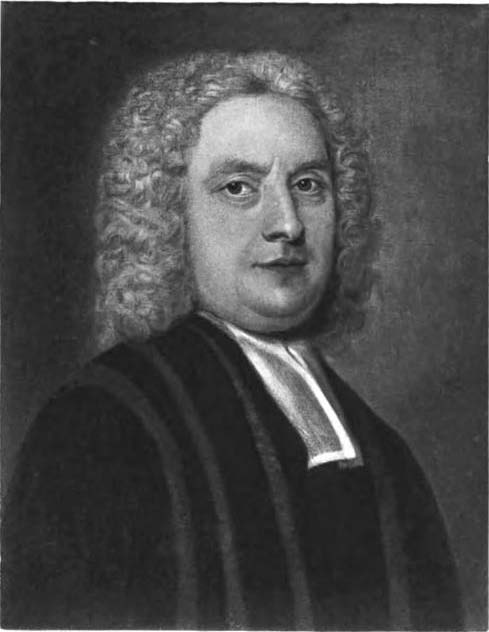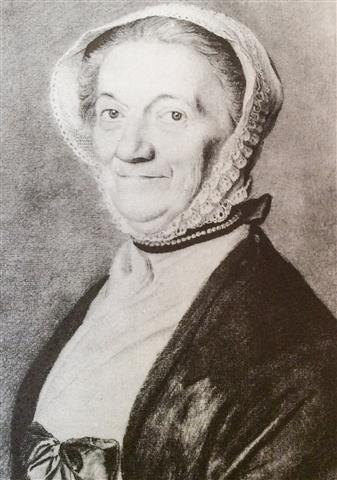Shortly after taking up his position Samuel made some notes about our village. At this time the population was probably less than 500 He wrote that the parish of Dersingham consisted of a heath, a warren, and a pretty large cornfield on a long easy descent to the town. The soil was light and sandy with some enclosures of richer land lying about the village.
White’s Directory some years later in 1836 also describes, a sandy heath and rabbit warren of 1900 acres. Rabbit warrens were a common feature of Norfolk partly owing to the sandy soil. The warrener was an important member of the community and it was his duty to keep the rabbits from straying as well as to kill them in the proper season. A silver grey breed was kept and in 1790 £10,000 worth were sent to London alone.
Samuel wrote that the houses, which numbered 66, were pretty near together except one farm house called Lyng House which was about two miles from the rest toward Great Bircham. These homes would have been around Manor Road, Chapel Road, Doddshill and Fern Hill. However an old man had assured him that there had been 30 other houses that had been taken down or suffered to fall.
It has been suggested that the houses were pulled down to combat an outbreak of smallpox. This disease was a continual danger during this century and Barbara mentions it many times in her letters to her sister. In 1741 she wrote that she was very fearful as a girl living near the common had been diagnosed with it. In another letter in 1751 she wrote that smallpox had broken out in the house nearest to them where she had been taking cream and butter during the winter. She mentions that their stables adjoined so it is intriguing to speculate which house this was.
Dr. Kerrich goes on to write that below the village towards the coast was a, pretty, large common and between it and the coast several large marshes that had been gained from the sea about the time that the borough of Castle Rising fell into decay when the sea retreated. Dr. Kerrich’s notes now confirm for us that the weather during this part of the century was very unsettled.
He wrote that the sea seemed to be pressing upon the coast with much more strength and causing inundations to the great damage of the land and loss of cattle. He describes a strong bank that James Hoste of Sandringham had constructed but which had been frequently broken through at great cost to Mr. Hoste. During a storm in 1703 we know that seven ships had been lost in the Wash with the loss of 20 lives. There was a flood recorded here in 1735 and in 1757 a herd of cattle was swept away by a high tide at Ingoldisthorpe.
Samuel writes that the villagers were farmers, and labourers except a William Grigson Esq. who had lately sold his estate to Richard Hammond and intended to leave at Michelmas Richard Hammond is shown on Faden’s map of 1797 as the owner of Dersingham Hall and according to the small map mentioned earlier considerable land close to the Hall. Samuel notes that the other large landowners are Lord Orford, the Hoste’s and intriguingly one R. G. a minor.
Samuel informs us that he was very seldom absent from the Parish, perhaps once in 3 or 4 years when he took care of some affairs and gave myself the pleasure of conversing a little with old friends. He comments that there were, no papists in the Parish, no Dissenters of any denomination and no Quakers.
He notes that none totally absent themselves from church but there are 3 or 4 who do it too often. He describes one as being born of parents that were Quakers. This man had not been in the village long but did attend the public baptism of his children. Unfortunately for us Samuel does not name him.
He tells us that Public Service is performed morning and afternoon alternately at Dersingham and Wolferton. A sermon is preached in both churches and Prayers are read in Dersingham on Wednesday and Friday during Lent and every day in Passion Week. He comments, with a faint touch of pride, that although there were no prayers read on Saints’ Days when he arrived he has by proceeding slowly and introducing them gradually obtained a small congregation on each occasion. The children are catechised during Lent and instructed in the meaning by questions and answers. The sacrament of the Lord’s Supper is administered 4 times a year when the number of communicants varies from 15 to 30.
While Samuel busied himself with Parish affairs Barbara as well as carrying out the duties expected of the Minister’s wife saw to the smooth running of the rambling old house in the Pastures. She was responsible for hiring and dismissing the servants and dealing with their duties. She complains many times to her sister about the difficulties in finding good help. Many servants made such a fuss about fetching wood and coals to bring upstairs for the fires so she would not pay them above £3 a year.
Martin, the coachman served them for several years and was married to Sarah who became almost like one of the Kerrich family. She was Barbara’s wet nurse and a constant feature of life in the old house. Sarah and Martin had six children, Betsy, Billy, Jenny, Johnny, Little Martin, and Tommy. It must have been a lively household with so many children about.
Tragically in 1748 Sarah died in childbirth and the family were split up. Little Martin was sent to an uncle to learn to be a brick maker. Billy went to his Grandfather while Sarah’s sister Elizabeth took in Tommy. A Mr. Phillips took in Betsy and Jenny. Barbara and Samuel kept Johnny. It must have been a dreadful blow to Martin.
A few years later in 1751 there was a serious dispute of some kind and Martin had to leave. It was a most distressing time for all. Barbara admits to shedding tears but Martin had left such ”an infamous character behind him” that it would be “ a scandalous thing ever to take him on again”. Another servant Sukey Brady was dismissed for cheating and deception. Other servants included Molly Barbara’s personal maid. Mr. Phillips is mentioned many times and we know that in 1740 Robert Walpole gave £5 a year to an Elizabeth Phillips to teach eight poor children to read.
Sadly Barbara suffered several miscarriages and in 1740 her first baby did not survive the birth. Samuel must have been deeply worried after what had happened to his first wife. Barbara writes movingly to her sister of her despair at the loss of the child and how she was unable to bear the sight of Sarah’s young baby. Samuel was a tower of strength at this time and she admits she could not have borne the pain but for his loving attention.
Happily two years later in 1742 she gave birth to a healthy girl who was christened Matilda, (Tilly). Her letters to her sister are then full of their delight in the child. We learn how she amuses all their friends with her childish prattle. On February 4th 1748 a son, Thomas, (Tommy) was born. He was not a particularly healthy child at first and did cause some concern. He was inoculated against smallpox in 1749 but overcame these initial childhood setbacks to become a fine young man.
Barbara also loved her garden. The small map of the time shows the gardens at the side of the house. It is possible that the large open area behind the row of cottages which is surrounded by an obviously old carstone and brick wall is the site of Barbara's garden.
From her letters we know Barbara kept turkeys and bees. She writes to her sister of the newborn calf she is rearing and how the ducks had to be removed from the garden as they were eating all the lettuces. There was a “very pretty” knot garden that Martin and Samuel had worked hard on.
Apart from gardening Barbara writes of practising on her piano and her latest efforts at sewing. She undertook the early education of both the children. There are many references to the children’s progress in spelling and reading.
The old house was always full of friends and visitors. Her sister came many times to stay and there were frequent visits and invitations to dinner for the Hoste’s of Sandringham. She was great friends with the Styleman’s of Snettisham Hall and once recounted how they had all gone to see a troupe of visiting actors perform a play there. I have already mentioned that Sir Robert Walpole of Houghton was Samuel’s benefactor and there were numerous visits to the great House. On one occasion Tilly delighted the company so much that she was hugged and kissed by everyone. It is likely that Sir Robert was also no stranger to Dersingham.
There were visits to the Assemblies at King’s Lynn during the Mart and Barbara often mentions what a fine company they had at church on a Sunday. The impression one gets is that it was a lively entertaining household and that the Kerrich’s were very active about our village.
National events sometimes intruded. On July 23rd 1745 the Young Pretender Charles Stuart landed in the Outer Hebrides to stake his claim to the Throne. By October he had crossed the border into England and by December the Jacobite rebels were in Derby only 130 miles from London. Barbara wrote to her sister that the rebels were expected in Lynn and that they were arming to defend themselves. If the rebels did come then there were plans to cut down all the bridges and sink ships in the shallows. As for Barbara and Samuel they had packed up all their valuables to hide but had no idea where they would they go. The panic was short lived as the rebels did not advance on London but returned to Scotland and ultimately defeat at Culloden.
In one letter of 1747 Barbara recounts how Samuel was busy stopping up the windows in the rambling old house in response to the Window Tax. This tax was frequently revised and very much resented by those living in large properties. Barbara complains that they will have to pay tax on more than forty windows in spite of Samuel’s efforts.
Not everything in the area was calm as Barbara tells her sister of numerous robberies taking place in 1748 and one dreadful incident near Snettisham when a servant was set upon, stripped of all her clothes and left in a ditch.
In 1751 Barbara’s sister Elizabeth (Postlethwaite) left Norwich and came to live them in the old house.



